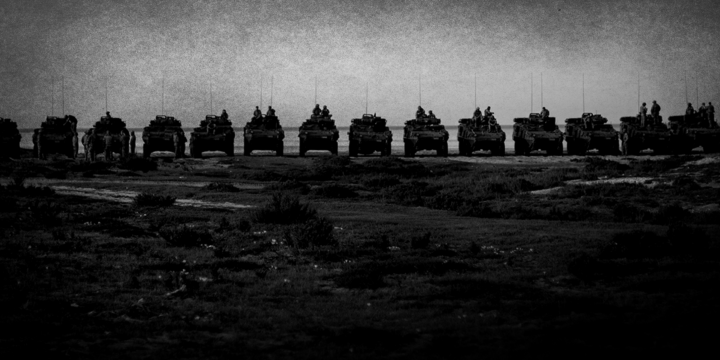The U.S. is remarkably secure
- With a robust nuclear arsenal, the world’s preeminent military by a large margin, an economy that remains the engine of the global economy, and geographic separation from most distant trouble, the U.S. is remarkably secure.
- But the U.S. faces profound challenges: the pandemic and its economic fallout, mounting debt, and a series of failing military campaigns that persist despite broad disapproval.
- The sources of U.S. strength provide an opportunity to treat these troubles: to rein in the excesses of U.S. foreign policy and focus on domestic priorities.
- What the U.S. must do to secure itself is less than is generally claimed: (1) prevent a hegemon from dominating Eurasia and (2) disrupt anti-U.S. terrorist threats. Both aims can be achieved with a more shrewd and measured use of limited resources.
- A restrained strategy reduces U.S. burdens—resulting in DoD savings and easing military overstretch—and increases security by keeping the U.S. military out of avoidable trouble.
Abandoning the status quo in favor of restraint
- The sources of U.S. strength are its people and economy. Any administration should therefore combat coronavirus and allow for an economic recovery—not drain limited resources abroad on missions disconnected from U.S. security.
- The U.S. should set defense priorities based on vital U.S. interests—and properly align the means to achieve those ends. The DoD budget is $750 billion because too much is asked of the military, not because of “waste, fraud, and abuse.”
- Match rhetoric with action to end endless wars. Dissolve peripheral commitments and reallocate resources accordingly. Set concrete deadlines and meet them: The U.S. should remove all combat forces from Afghanistan by May 2021, for starters.
- Reduce reliance on sanctions and increase diplomatic efforts to manage problems. Sanctions almost always fail to achieve desired political outcomes, risking U.S. financial hegemony and eroding U.S. soft power in the process.
Regional implications of a realistic foreign policy
- Reduce attention and investments in the Middle East—no rival is poised to dominate the region and control oil prices, so the U.S. can give up its failed attempt to run the region’s politics with military power. U.S. ground forces should move offshore or home, while maintaining the capability to strike anti-U.S. terrorist threats local forces fail to manage.
- Shift defense burdens in Europe to allies by reducing U.S. commitments and ending NATO expansion. Ukraine and Georgia should not be allowed to join NATO. Whether or not wealthy Europeans spend more on defense, they are largely secure due to their potential capability and Russia’s weakness.
- Maintain a stable balance of power in Asia, primarily through allies. China’s rise is a challenge to manage, not a crisis. The U.S. should aid allies in their efforts to fortify themselves, deterring potential Chinese aggression; enhance prosperity through trade; and engage diplomatically to advance other interests. Frenzied efforts in East Asia to preserve military dominance—rather than prioritize security—could exhaust the U.S. and spark a new cold war.
What the U.S. gains by adopting restraint
- Restraint provides more security at less cost and risk—it will extricate U.S. forces from wars and improve readiness. With fewer missions, U.S. military personnel, procurement, and operational costs will drop substantially.
- Removing ground forces from the Middle East will reduce direct threats to Americans, given that occupations provoke nationalist resistance and offer a target for violent radicals. The U.S. will save tens of billions a year (up to $70 billion by one estimate) by reducing force structure in the Middle East and adjusting the size of the Army to reflect that shift. While the region will remain troubled and often violent, it is unlikely to be worse off.
- A Europe that takes more responsibility for its defense will remain safe and prosperous, and a boon to U.S. trade. Reducing U.S. garrisons will provoke angst in some European capitals, but it will encourage countries actually concerned for their security to spend that way. It might reanimate European defense cooperation efforts, which will be useful if the Russian threat eventually grows. Reducing the U.S. troop footprint in Europe will also, purposefully, make it more difficult to start a war in the Middle East. Removing the specter of NATO expansion to Georgia or Ukraine will limit tension with Russia and aid progress in arms control, Syria, and other areas of mutual concern.
- Adopting a more defensive approach in Asia—where U.S. goals are defensive—will prompt allies to do more for their own security and decrease the burden on U.S. forces. This sort of allied fortification will achieve their security with less U.S. cost and risk. Fielding U.S. offensive capability for defensive aims is expensive since it must overcome geographic reality and technological trends that favor defenders. Defensive defense will reduce U.S.-China tensions and facilitate cooperation in other areas.
- Force reductions in the Middle East, Africa, and Europe will free up forces, especially naval and air forces, to react to new dangers—whether to a Chinese action in Asia or something else—while reducing U.S. defense costs.
- Limiting points of tension with Russia and China will undercut incentives for them to increase their alignment, a low probability but worrisome possibility under status quo policies. It will also allow progress on issues of mutual concern.
Implications for other major areas of interest, friction points, and global hot spots
- Taiwan: Do not fear sudden deterrence failure and, therefore, take extreme measures likely to worsen U.S.-China relations, such as explicitly agreeing to defend Taiwan or pushing U.S. forces into an even more offensive posture. Continue to advocate a peaceful solution while avoiding a potentially disastrous war. Push Taiwan to emulate China’s anti-access and area denial technologies as part of a so-called porcupine strategy. This will make the waters separating Taiwan from the mainland a “no man’s sea.”
- North Korea: U.S. strength means deterrence will hold—the status quo favors us, and time is on our side. North Korea’s denuclearization is unlikely. Normalization and armistice, as our ally South Korea prefers, should be the U.S. goals there.
- NATO: Reduce U.S. garrisons and push responsibility to European nations to either provide more for their own defense or accept fewer overall defenses. End the European Deterrence Initiative since NATO serves that purpose already. Stop discouraging common European defense efforts. Allied free-riding is a fairness problem induced by incentives the U.S. created, not an inevitable source of tension. Remove U.S. tactical nuclear weapons (now operationally useless) from Europe and Turkey.
- Afghanistan: Exit as planned, no later than May 2021, regardless of progress in intra-Afghan talks. The U.S. accomplished its core counterterrorism objectives there long ago: (1) decimating Al-Qaeda and (2) punishing the Taliban for harboring them. The strategic mistake was subsequently adopting tragically grandiose nation-building goals. U.S. striking power can continue to deter the Taliban from harboring international terrorists in territory it controls without U.S. ground troops in the country.
- Iran: Avoid war by ending “maximum pressure.” Iran is a middling power contained by its neighbors. Its support for militias outside its borders is a problem, but not one the U.S. can solve with more threats or forces. U.S. efforts to re-enter the JCPOA could convince Iran to come back into compliance, but even if that fails, the U.S. should stop menacing and threatening Iran, while watching it warily and maintaining deterrence if it attacks Americans or U.S. allies.
- Syria: Remove the 500-plus U.S. military personnel there. The murky rationales of chasing ISIS remnants, taking oil to weaken Assad, aiding the Kurds, combatting Iran, or denying something to Russia are not sensible. Assad’s overthrow is a forlorn hope that stands in the way of talks with his government that might produce a stable peace deal that reduces humanitarian atrocities. The Kurds can live under an Assad government that polices the border with Turkey in both directions. There is no good solution in Syria, but U.S. forces are doing nothing helpful while risking escalation to a dangerous war with Syrian forces, Iran, or Russia.
- Iraq: U.S. forces are no longer needed to combat ISIS but are regularly subject to rocket fire from militias with links to Iran. This is a situation that courts wider war for no discernible benefit, and it should end through the removal of U.S. forces. As with Syria, the maintenance of a “maximum pressure” policy that threatens Iran with nearby ground forces is incompatible with exit.
- Yemen: End U.S. support for the Saudi bombing campaign. Originally a sop to the Saudis from the Obama administration to allay their concerns about the Iran deal, and continued by the Trump administration despite Congress’ opposition, aid to the Saudis has enabled a humanitarian catastrophe that undermines U.S. interests and values.
- Africa: U.S. counterterrorism deployments in the Horn of Africa in the east—as well as smaller deployments in West Africa—should be re-evaluated by Congress and probably ended. Local state forces can be aided, but U.S. counterterrorism operations tend to confuse local Islamist rebels who threaten someone else with U.S.-focused terrorists who U.S. forces must hunt.
Connecting budgets and strategy—providing more security at less cost to rebuild U.S. power
- The $750 billion DoD budget is excessively expensive mainly because U.S. military commitments are too many. A policy that shifts burdens to allies and fights fewer wars will generate major savings.
- The war budget (or Overseas Contingency Operations account) was $66.4 billion in FY 2020, of which $16 billion was marked as “base to OCO” funding. U.S. operations in Afghanistan are roughly half of that funding—this is the first place to cut.
- The U.S. can be safer with less cost to the taxpayer by ending regime change campaigns; promoting burden shifting to European and Asian allies; and exiting the Middle East, where U.S. interventions have made things worse at great cost in blood and treasure.
- A restraint-oriented budget will focus on larger nation-states and shift funds to focus on naval forces that surge to fight (rather than constant patrolling), missiles, and bombers. Ground forces will be smaller but heavier and more lethal.
- Cuts to missions and force structure can allow for heavy cuts to administration and operational costs; combatant commands in particular can be consolidated or shuttered, starting with AFRICOM and NORTHCOM.
Events on Grand strategy

virtualSyria, Balance of power, Basing and force posture, Counterterrorism, Middle East, Military analysis
February 21, 2025

virtualGrand strategy, Basing and force posture, Burden sharing, Global posture, Military analysis
October 31, 2024

